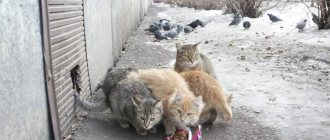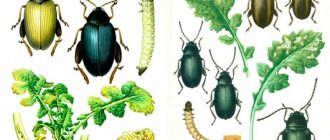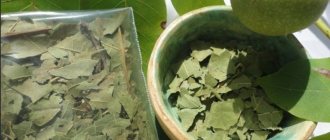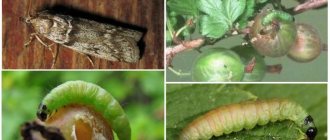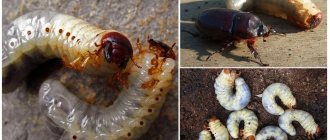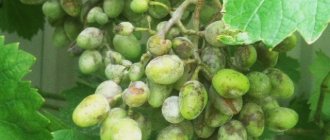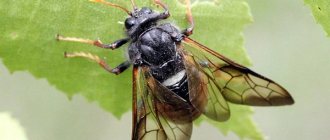Lice in dogs, or canine lice, are a contagious parasitic disease that is less common than flea infestation. A louse is a tiny, flat, six-legged parasite without wings that feeds on a dog's skin or sucks its blood. The routes of infection and the clinical picture of both diseases are very similar, so it is important to learn how to recognize lice. Otherwise, treatment may not be successful. How to distinguish a louse from other parasites, how to treat lice, what to do to prevent your dog from getting infected - we will answer all these questions in this article.
Where can a dog get lice?
Lice living in dogs, unlike other skin parasites, do not jump and fly; they crawl slowly, clinging to the fur with hooks on their legs.
In nature, there are two types of lice that live on dogs:
- Trichodectes canis are chewing (biting) lice. They have a wide habitat. Characterized by a flat, blunt head. They feed on epidermal cells and sebaceous secretions of the skin. They are carriers of tapeworms.
- Linognathus setosus – sucking lice. Distributed everywhere, more often found in regions with cold climates. They prefer to live on long-haired dogs. Characterized by a pointed proboscis. They feed on the blood of dogs.
Ways of lice infection
Parasites cannot live long without a host; a louse that falls off dies after three days. Therefore, the main route of infection is direct contact.
- From a sick dog to a healthy one during a walk, at a dog show or during a visit to the veterinary clinic.
- From infected mother to puppies.
- During the hunt for canine breeds (wolf, arctic fox).
- When living together in kennels, shelters, dog hotels.
- In case of severe infestation, infection is possible through common care items: beds, bedding, combs, upholstered furniture, carpeting.
- Through poorly processed grooming tools.
- In rare cases, infection can occur through the shoes and clothing of a person who has been in contact with an infected dog.
Lice are species-specific parasites. They can only be transmitted and live on the host species, in this case dogs.
Therefore, the answer to the question that worries all dog lovers: “Are lice transmitted from dogs to humans?” – negative. Likewise, a dog cannot become infected with human lice.
Important!
Most often, outbreaks of invasion occur in winter.
What do lice look like on dogs?
Dog owners need to become familiar with the appearance of the parasite in order to choose the right insect control methods. Dog lice have an oblong, flattened body that is light gray or yellowish in color. The length of the parasite does not exceed 1 mm. The head is small with a developed sucking apparatus. The louse has powerful jaws that can bite through thick skin. Between the jaws there is a proboscis, which the parasite inserts into the wound made by the jaws and begins to suck out the blood.
For strong adhesion to the skin, hard bristles-hooks are located on the proboscis. To quickly move around the body and fur of the animal, there are small tenacious claws on the limbs. The insect has no eyes. The abdominal region is highly developed, so one individual can suck a lot of blood from a dog.
The louse reproduces by laying eggs (nits) in the animal's fur. The adult secretes a special secretion, which, when exposed to cold air, hardens and firmly attaches the eggs to the hair. There is another type of lice called lice-eaters. They feed only on animal fur.
Symptoms of lice infestation
Adult parasites reach a size of 3 mm (sesame seed) - they are visible to the naked eye. Lice eggs (nits) are smaller in size and resemble dandruff in appearance. They can be found by brushing the dog's fur. If you shake the combed hairs, the white grains of dandruff will fall off, and the nits will remain on the hair.
What are the signs that indicate a dog has lice?
- Itching – The dog is constantly itching. Scratching himself. Injures the skin.
- The animal bites insects.
- Deterioration in the quality of the coat: tangles, loss of shine, sloppy appearance.
- Dryness and redness of the skin, dermatitis, neurodermatitis, eczema.
- Baldness, bald spots.
- Weight loss and exhaustion.
- Infected purulent wounds at the bite sites.
- Delayed development and growth in puppies.
- Depressed state, depression, insomnia.
- With severe infestation - anemia. Most often observed in young offspring and small breeds of dogs.
How dangerous is head lice for dogs?
- Suppresses the nervous and immune system of the animal.
- Causes wasting and anemia.
- Pathogens transmit helminth eggs.
- Severe allergic reactions to bites are possible.
Important!
The symptoms of pediculosis resemble the clinical picture of other parasitic diseases and dermatitis, so it is important to make a correct diagnosis.
Symptoms and treatment of lice in dogs
Linognathosis or lice is a disease of dogs in which there is constant itching, scratching of the skin and restlessness of the animals. It is caused by lice, wingless small insects with an elongated and flattened body with villi and hairs. They have 6 legs with claws that hold the fur tightly. The head is narrower compared to the body. The mouthparts are designed so that they can pierce the skin and suck out blood. No eyes.
Dog lice are specific parasites. They live exclusively on dogs and never switch to humans. These harmful insects are carriers of dangerous infectious diseases, worms, with which they can infect their host and contribute to the appearance of itching and irritation of the animal’s skin, which causes anxiety.
Diagnosis of pediculosis
The above symptoms are a reason to take your dog to the vet. Ectoparasites can be detected visually by carefully examining the pet’s fur and skin. Dog lice love moisture - they can be found in the area of the animal's anus and in places where there is damage to the skin: scratches, scratches.
In a veterinary clinic, the found samples of parasites and their eggs are examined under a microscope. In addition, the veterinarian conducts a microscopic examination of the animal's hair and skin scrapings. The final diagnosis is made based on a comparison of clinical symptoms and visual identification of lice and nits.
Lice preparations for dogs
Lice cannot escape from the animal during treatment, as fleas can. Therefore, any effective insecticide preparations are suitable for the treatment of canine lice. In veterinary medicine they use: drops, shampoos, sprays and anti-parasitic collars.
Lice drops
Insectoacaricidal drops on the withers are a universal drug with high efficiency. Used in adult dogs and puppies of all breeds. A positive effect occurs in 99-100% of cases. They are easy to use.
Popular anti-parasitic drops:
- Stronghold (Stronghold);
- Frontline (Frontline);
- Hartz Ultra Guard Plus;
- Api-San Dana Ultra;
- RolfClub 3D.
Pediculicidal shampoos
Shampoos with insecticidal components are convenient to use for treating puppies and small toy dogs. For representatives of large breeds, this method is not effective and expensive. In addition, a large dog is more difficult to handle. To improve the quality of wool, various natural additives and softening components are added to shampoos. The best brands are non-allergenic and fast-acting.
Popular brands of insecticidal shampoos:
- Bars (Agrovetzaschita);
- Lugovoy;
- BIO-GROOM;
- Le Artis Herba Vitae;
- Iv san bernard.
Flea sprays and aerosols
Insecticidal preparations in aerosols are allowed to be used both on adult dogs and their offspring. The preparations require special care during application and thorough treatment of the entire coat of the animal. These are low allergenic drugs that do not cause side symptoms, but with a slight residual effect.
Popular brands of sprays:
- GreenFort Neo;
- Fiprex;
- RolfClub 3D;
- Api-San Dana Ultra;
- Frontline.
Antiparasitic collars
Collars impregnated with a special insecticidal composition are used to get rid of head lice and to prevent it. Lice are removed in 7-14 days. The disadvantages of the product are high allergenicity and the possibility of damage to the fur where it is worn.
Popular brands of collars:
- Foresto (Bayer);
- Beaphar;
- Green Fort;
- RolfClub 3D;
- Api-San Dana Ultra.
The type of antiparasitic agent is prescribed by the treating veterinarian, taking into account the size, age and physiological condition of the dog.
Important!
Insecticides do not kill lice eggs; treatment should be carried out until the colony of parasites is completely destroyed.
How to use medications correctly
If the diagnosis is correct and an effective remedy is selected, the process of curing head lice takes about 30 days. The owner of an infected pet must strictly adhere to the selected treatment regimen and observe the timing of re-treatment.
Tips for treating dogs for lice:
- Shave the hair in areas where it has been scratched and remove tangles.
- Before treatment, bathe the animal with an antibacterial or pediculicidal shampoo.
- Apply shampoo to damp fur, distributing evenly throughout the animal's entire body. Carry out the procedure wearing rubber gloves. Do not wash off the shampoo immediately, wait until it is absorbed. After rinsing, dry the animal, dry and comb with a thick comb, combing out dead lice.
- The spray is applied to the entire coat, covering the mucous membranes and eyes of the animal.
- The drops are carefully rubbed into the withers with hands wearing rubber gloves, spreading the fur. After this, a protective collar is put on the dog to prevent it from licking the medicine.
- Isolate your dog from other pets.
- To avoid re-infection, it is necessary to deeply disinfect the dog’s habitat, replace its bedding, and treat all grooming items.
Important!
Treat with insecticides 3-4 times with an interval of 7-14 days - this is the period during which adults hatch from eggs.
How to remove lice
To remove lice from a dog, it is necessary to use insecticidal preparations that contain substances that are toxic to parasites. You need to choose the appropriate products according to the age, size, and breed of the animal. Before using the drug, it is important to make sure that the dog does not have any diseases, including dermatological ones.
Lice and lice in dogs. Prevention and treatment
The most popular, highly effective remedies for lice in dogs are insecticidal special drops. The use of such drugs allows you to quickly get rid of parasites. Various sprays and aerosols have similar properties.
For preventive treatment of the animal, you can use relatively safe shampoos, which are also recommended for removing ectoparasites from puppies and sick animals.
If your dog has lice, you can get rid of them at home by using insecticidal drops.
The following products are particularly effective:
The drug should be applied to the animal’s withers area. This method of use helps prevent toxic substances from entering the dog’s digestive tract. After applying the drops, their effect lasts for two or more months. More often, drops are used to kill lice on large dogs.
To prevent head lice in dogs, as well as for minor infestations, you can use lice shampoos. This product has a mild effect, promotes hair care, and alleviates the unpleasant symptoms of head lice.
Common brands of shampoo are:
In case of severe infestation, the use of shampoos is not effective. It is recommended to use them more often for treating the hair of small breed dogs, puppies, weakened, sick animals. It can also be used as a caring and prophylactic agent.
Sprays and aerosols are a remedy for lice, the effect of which is similar to drops. However, they are more convenient to use. They should be applied directly to the pet's fur. Before use, it is important to put a restrictive collar on your dog, which will help prevent toxic substances from entering the animal’s digestive tract.
The most popular brands of sprays are:
The active effect of the spray lasts for several weeks, after which re-treatment of the wool is required. Before removing lice from a dog in this way, it is important to make sure that there is no damage to the animal’s skin or dermatological diseases.
If your pet has dog lice, dog collars can be used in the early stages of the infestation. The composition of such products includes toxic substances that have a destructive and repellent effect on parasites.
Collars can be used to prevent the appearance of parasites. Due to the content of toxic substances against lice in the materials from which the collars are made, they cannot be used to treat weak animals, puppies.
Treatment of lice in dogs at home is justified only if the use of traditional insecticidal preparations is impossible due to objective reasons, including the small age of the animal.
To rid your dog of parasites using home methods, you can resort to the following methods:
- herbal decoctions. It is recommended to bathe the dog in a rich decoction of chamomile and wormwood.
- Dust soap. Instead of traditional anti-lice shampoo, you can use dust soap, which has minimal cost. To destroy parasites, it is recommended to treat the animal’s fur several times in a row.
Due to low efficiency, it is recommended to use traditional methods against pediculosis only to prevent the appearance of parasitic infestation.
To remove lice from a puppy less than two months old, it is recommended to use only mild anti-lice shampoos. They do not contain toxic substances and are gentle on the coat. If the puppy is severely infested, it is recommended that after bathing the animal manually, that is, by using a special rare comb, remove parasites and nits from the fur.
Prices for drugs
Russia
- Stronghold, drops, 3 pipettes of 1 ml each, from 1550 to 1650 rubles;
- Frontline, drops, 1 pipette, from 515 to 850 rubles;
- Hartz Ultra Guard Plus, 3 pipettes, from 1250 to 1360 rubles;
- BIO-GROOM, shampoo, 947 ml., from 2000 to 2260 rubles;
- Iv san bernard, shampoo, 250 ml., from 380 to 395 rubles;
- Bars (Agrovetzaschita), shampoo, 250 ml., from 165 to 175 rubles;
- GreenFort Neo, spray, 200 ml., from 400 to 430 rubles;
- RolfClub 3D, spray, 200 ml., from 450 to 480 rub.;
- Api-San Dana Ultra, 100 ml., from 260 to 280 rubles;
- Green Fort, collar, from 210 to 230 rubles;
- Foresto (Bayer), collar, from 1500 to 2250 rubles.
Ukraine
- Api-San Dana Spot-On, drops, from 75 to 85 UAH;
- RolfClub 3D, drops, 3 pipettes, from 145 to 155 UAH;
- Stronghold, drops, 3 pipettes, from 620 to 645 UAH;
- Bars (AVZ), spray, 100 ml., from 120 to 130 UAH;
- Beaphar, shampoo, 200 ml., from 215 to 225 UAH;
- Ultra Guard Hartz, shampoo, 200 ml., from 155 to 165 UAH;
- Phytoelite, shampoo, from 45 to 50 UAH;
- Bayer Bolfo, spray, 250 ml., from 175 to 185 UAH;
- RolfClub 3D, spray, 200 ml., from 210 to 230 UAH;
- Api-San Dana Ultra, collar, from 65 to 75 UAH;
- Foresto (Bayer), collar, from 650 to 930 UAH.
Traditional methods of treatment
To completely get rid of canine lice, it is necessary to treat the pet with special preparations in several stages. Traditional medicine can only be used as part of a complex of therapeutic measures.
Popular folk remedies:
- rosemary;
- sagebrush;
- tansy;
- geranium;
- eucalyptus.
Decoctions and infusions are prepared from these herbs. For 1 liter of boiled water take 20 grams. dry grass or 40-50 gr. chopped freshly picked. Cook in a water bath for 25-30 minutes. Cover with a lid and cool, filter. The product is applied to the animal’s fur without rinsing off. Treatment is carried out once every three days for a month. Can be used as a prophylactic.




